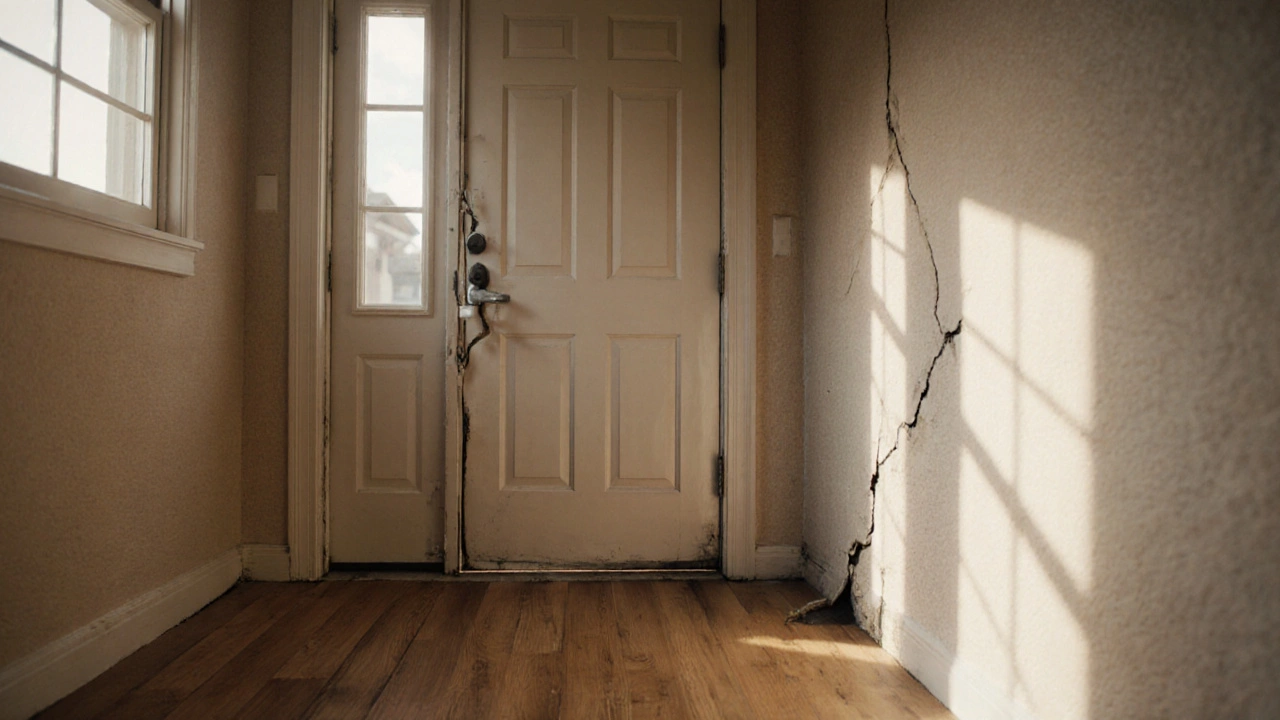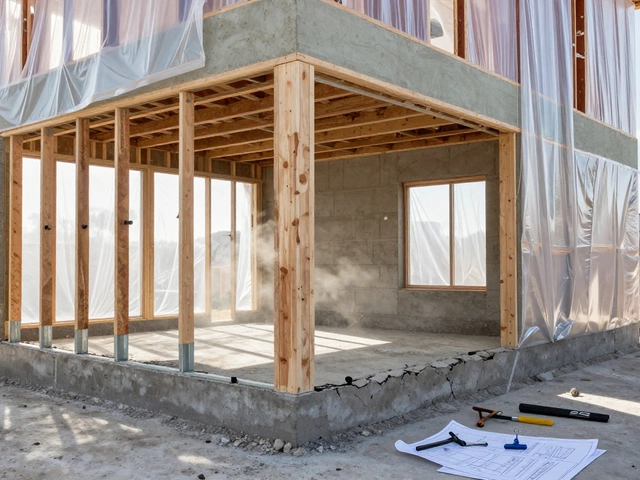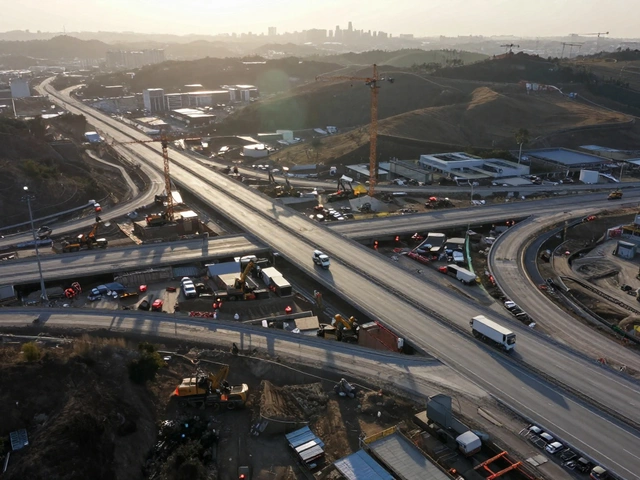Foundation Issue Assessment Tool
Foundation Issue Assessment
Check the symptoms you're experiencing to determine if you may have a major foundation issue. This tool uses criteria from industry standards to help you assess the severity of your foundation problems.
When your home starts shifting, doors stick, or walls develop new cracks, you’re probably wondering what’s really going on beneath the floor. Not every little settlement needs a whole‑house overhaul, but some problems cross the line into a major foundation issue. Understanding where that line is can save you from costly surprises and keep your house safe.
What qualifies as a major foundation issue?
Major Foundation Issue is a structural condition where the load‑bearing elements of a building have moved beyond acceptable tolerances, jeopardizing the building’s overall integrity and habitability. In plain terms, it’s not just a hairline crack or a few inches of settlement - it’s a problem that threatens the stability of the entire structure.
Common signs that you’re dealing with a major problem
- Horizontal cracks wider than ¼ inch in basement walls.
- Staircases that have become noticeably uneven.
- Doors and windows that jam or no longer close properly.
- Large gaps between the floor and walls, often over an inch.
- Bowling‑ball‑size or larger cracks that run vertically and reach the foundation slab.
- Excessive moisture or water pooling around foundation footings.
These symptoms often appear together, and the more you notice, the higher the likelihood you’re past the “minor” stage.
What typically causes a major foundation issue?
Understanding the root helps you assess risk and plan repairs. The biggest culprits include:
- Soil movement: Expansive clays that swell when wet and shrink when dry can push or pull on footings.
- Hydrostatic pressure: Water buildup against retaining walls creates lateral forces that can crack walls.
- Improper load distribution: Adding heavy equipment or building extensions without reinforcing footings overloads the original design.
- Heaving: Frost or underground water freezes, expanding the soil and lifting the slab.
- Poor construction practices: Inadequate compaction, insufficient rebar, or using the wrong concrete mix can set the stage for failure.
In Vancouver’s wet climate, hydrostatic pressure and soil movement are especially common, so local homeowners should keep a close eye on drainage.
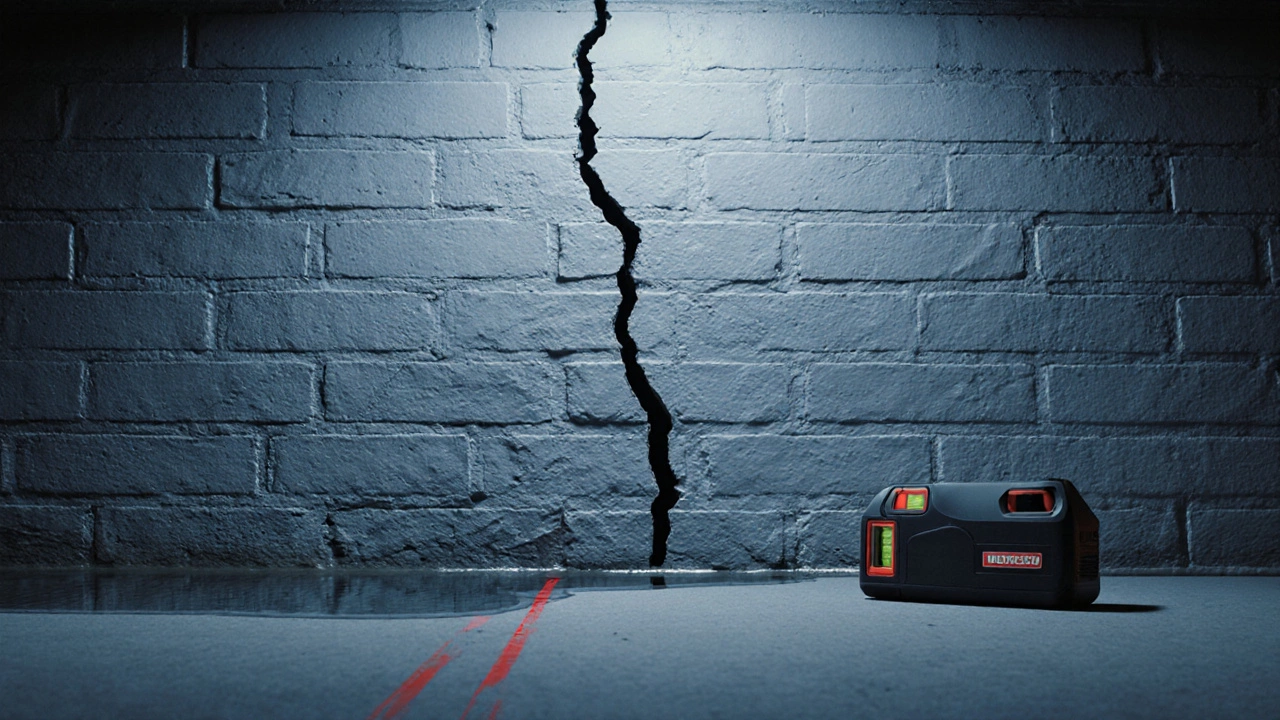
How professionals determine severity
A certified Foundation Repair specialist follows a systematic approach:
- Visual inspection: Documenting crack width, direction, and pattern.
- Level measurements: Using laser levels to record floor elevation changes over time.
- Soil testing: Boreholes and lab analysis reveal moisture content and expansion potential.
- Structural analysis: A licensed structural engineer calculates load paths and determines if the building meets current code requirements.
If any measurement exceeds the industry‑accepted limits-generally ¼ inch horizontal movement or ½ inch vertical movement-most engineers classify it as a major issue.
When to repair versus when to monitor
| Aspect | Minor Issue | Major Issue |
|---|---|---|
| Crack width | Less than ¼ inch | ¼ inch or more (horizontal) / ½ inch (vertical) |
| Floor movement | Less than ¼ inch over 6 months | ¼ inch or more over 6 months |
| Door/window function | Occasional sticking | Consistent jamming or misalignment |
| Water intrusion | Occasional | Persistent pooling or seepage |
| Structural risk | Low | High - risk of collapse or severe deformation |
If your situation matches any of the “Major Issue” criteria, waiting can lead to more extensive damage and higher repair costs.
Typical repair solutions for major issues
There’s no one‑size‑fits‑all fix, but the most common methods include:
- Underpinning: Installing piers (helical, push, or concrete) that transfer the load to stable soil strata.
- Wall anchors and tie‑backs: Counteracting lateral forces from hydrostatic pressure.
- Slabjacking (mudjacking): Pumping a cementitious grout beneath the slab to lift it back into place.
- Drainage improvements: French drains, footing drains, and proper grading to reduce water pressure.
- Soil stabilization: Chemical or mechanical methods to reduce expansion potential.
In many Vancouver homes, a combination of underpinning and upgraded drainage solves the problem for good.
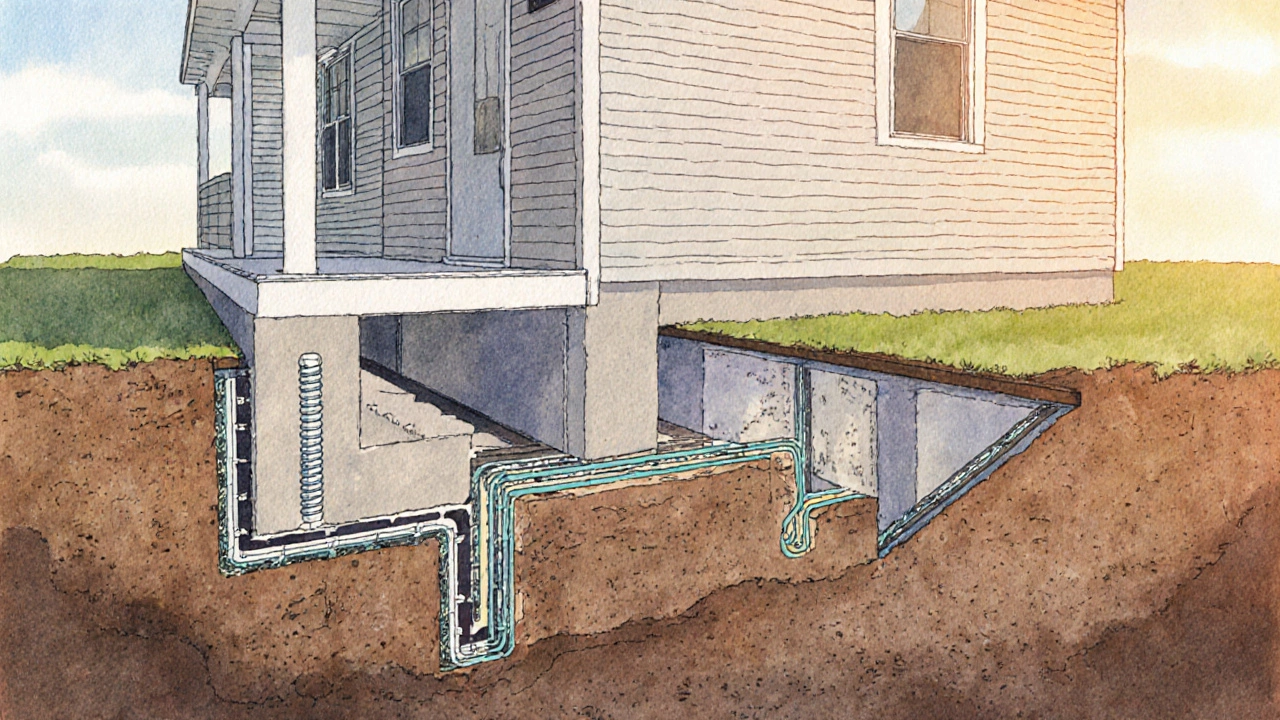
Cost considerations and timelines
Major repairs are a significant investment. Rough averages for the Greater Vancouver area (2025 data) are:
- Underpinning: $12,000 - $30,000 depending on depth and number of piers.
- Wall anchor systems: $8,000 - $15,000.
- Full slabjacking: $5,000 - $12,000.
- Drainage upgrades: $3,000 - $10,000.
Projects typically take 2-4 weeks from permit approval to final inspection, although severe cases may require up to two months. Insurance usually won’t cover these costs unless a sudden event (e.g., earthquake) caused the damage.
Prevention tips to keep major issues at bay
- Maintain proper grading - keep soil sloping away from the foundation by at least 5 %.
- Install and regularly clean gutters and downspouts.
- Monitor indoor humidity; use dehumidifiers in basements during wet seasons.
- Perform annual visual checks for new cracks or uneven floors.
- Consider a geotechnical survey before any major renovation or landscaping project.
Small proactive steps can delay or even prevent a major foundation issue from ever developing.
Key Takeaways
- A major foundation issue means the building’s load‑bearing elements have moved beyond safe limits.
- Watch for wide horizontal cracks, uneven floors, and persistent moisture problems.
- Soil expansion, hydrostatic pressure, and poor construction are the top causes.
- Professional assessment should include visual inspection, level measurements, soil testing, and structural analysis.
- When major signs appear, repair options like underpinning, wall anchors, and drainage upgrades become necessary.
How can I tell if a crack is a sign of a major issue?
Cracks wider than ¼ inch that run horizontally in basement walls, or vertical cracks that exceed ½ inch, usually indicate a major problem. Combined with uneven floors or door misalignment, it’s time to call a foundation specialist.
Is foundation repair covered by homeowners insurance?
Generally no, unless the damage results from a covered peril like an earthquake or sudden water intrusion. Routine settlement or soil‑related movement is considered a maintenance issue and is the homeowner’s responsibility.
What’s the difference between underpinning and slabjacking?
Underpinning installs new deep footings (piers) to support the structure, while slabjacking lifts an existing concrete slab by injecting grout beneath it. Underpinning is used for severe settlement, slabjacking for modest lifts.
How long does a typical major foundation repair take?
Most major repairs, including underpinning and drainage upgrades, take 2-4 weeks after permits are approved. Extremely complex cases can extend to eight weeks.
Can I prevent major foundation issues with landscaping?
Yes. Avoid deep planting beds near footings, keep heavy planters on patios rather than directly on the slab, and ensure irrigation systems don’t over‑water the soil around the foundation.
